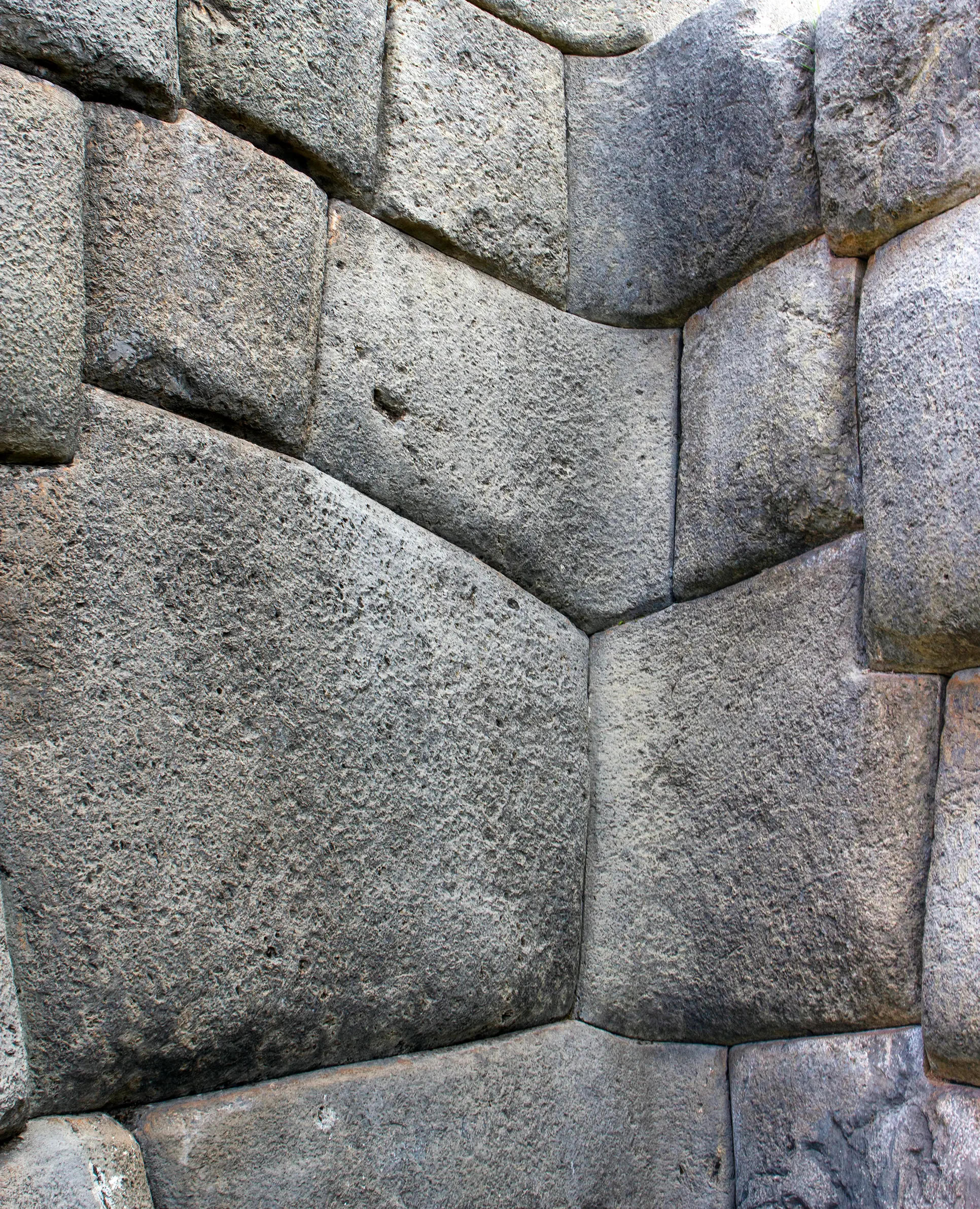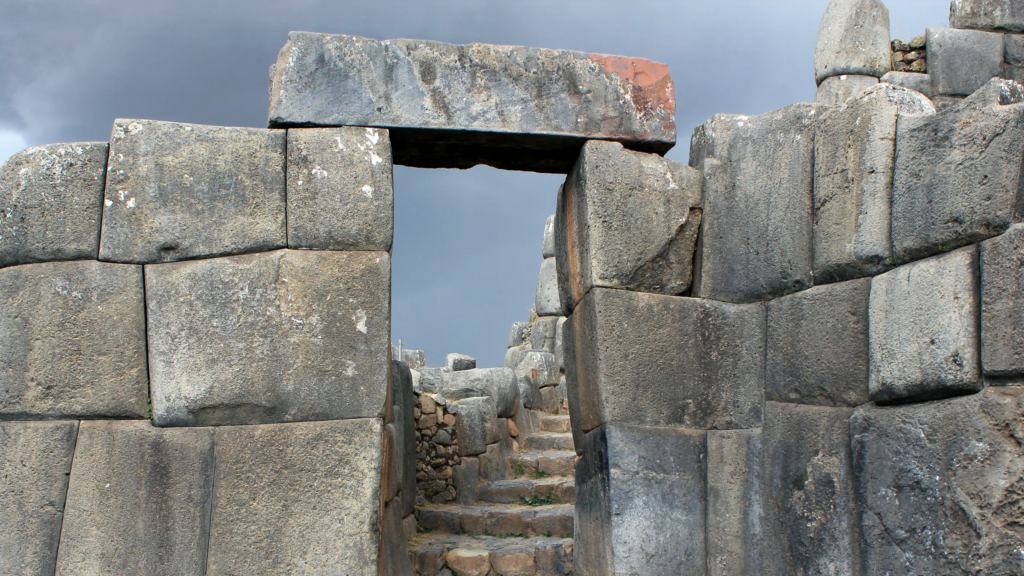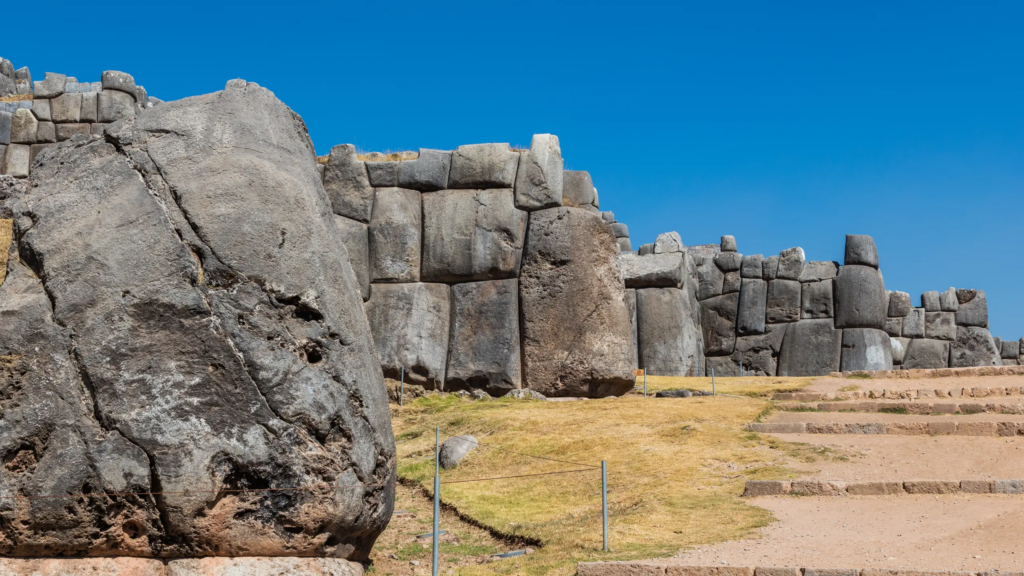Introduction
Nestled high in the Andes Mountains of Peru, the Sacsayhuaman Citadel stands as a testament to the architectural brilliance and cultural richness of the Inca civilization. This monumental structure, located just outside the city of Cusco, has captivated the imagination of historians, archaeologists, and visitors alike for centuries. Sacsayhuaman, pronounced “sexy woman,” is more than just an impressive collection of massive stone walls; it is a symbol of the ingenuity and engineering prowess of the Inca people. In this essay, we will delve into the history of the Sacsayhuaman Citadel, exploring its origins, construction, and potential uses in the context of Inca society.
Historical Context
To understand the significance of Sacsayhuaman, one must first grasp the historical context in which it was built. The Inca Empire, the largest empire in pre-Columbian America, thrived from the early 15th century until the Spanish conquest in the 16th century. At its height, the empire stretched across a vast territory, encompassing parts of modern-day Peru, Ecuador, Bolivia, Chile, and Colombia. Cusco, the capital of the Inca Empire, was the epicentre of political, religious, and cultural life.
Construction of Sacsayhuaman
Sacsayhuaman was constructed during the reign of the ninth Inca ruler, Pachacuti, who is credited with expanding and consolidating the Inca Empire. The exact date of construction is uncertain, but it is believed to have taken place in the mid-15th century. The name Sacsayhuaman is derived from the Quechua words “saqsay” (satisfied) and “waman” (hawk), symbolizing the Inca’s spiritual connection with the divine.
The citadel is situated on a hill overlooking Cusco and covers an extensive area of about 3,000 hectares. What sets Sacsayhuaman apart is its remarkable construction, characterized by colossal limestone blocks meticulously fitted together without the use of mortar. The precision of the stonework is astounding, with some blocks weighing upwards of 100 tons. The construction techniques employed by the Inca at Sacsayhuaman remain a marvel to modern architects and engineers, raising questions about how such feats were accomplished without the aid of advanced tools.
Purpose and Function
The purpose and function of Sacsayhuaman have been subjects of much debate among scholars. While it is clear that the site held significant cultural and religious importance, the precise nature of its use remains elusive. Several theories have been proposed, each shedding light on different aspects of Inca society.
1. Religious and Spiritual Significance
One prevailing theory suggests that Sacsayhuaman served as a religious and ceremonial site. The complex layout, with its three massive terrace walls, is believed to represent the three realms of the Inca cosmology – the Hanan Pacha (upper world), Kay Pacha (world of the living), and Uku Pacha (underworld). The expansive open areas within the citadel may have been used for religious ceremonies, rituals, and gatherings, reinforcing the Inca’s spiritual connection with the natural world.
2. Defensive Fortification
Another prominent theory proposes that Sacsayhuaman was primarily a military fortress, strategically positioned to defend Cusco from potential invaders. The massive walls, zigzagging in a serpentine pattern, could have served as an effective defensive barrier. The precision of the stonework and the size of the blocks also suggest that the Inca intended the structure to be imposing and awe-inspiring, possibly deterring any would-be attackers.
3. Astronomical Observatory
Some researchers argue that Sacsayhuaman had astronomical significance, serving as an observatory for studying celestial events. The alignment of certain structures with solstices and equinoxes supports this theory. The Inca civilization was known for its advanced knowledge of astronomy, and Sacsayhuaman may have played a role in their celestial observations, aiding in agricultural and religious practices tied to astronomical events.
4. Ceremonial Centre and Royal Residency
Combining elements of various theories, some scholars suggest that Sacsayhuaman was a multifunctional complex, serving as both a ceremonial centre and a royal residency. The location’s prominence and the intricacy of its construction could signify its importance as a place where the ruling elite conducted religious ceremonies and governmental affairs.
Legacy and Preservation
Despite its enduring legacy, Sacsayhuaman faced significant challenges over the centuries. The arrival of the Spanish conquistadors in the 16th century marked a dark period for the Inca civilization, and many of their architectural marvels, including Sacsayhuaman, suffered extensive damage. The conquistadors, viewing the Inca religion as pagan, targeted religious structures, dismantling parts of Sacsayhuaman and repurposing the stones for their own constructions.
In subsequent years, natural disasters, including earthquakes, took their toll on the citadel. Despite these challenges, a substantial portion of Sacsayhuaman remains standing today, a testament to the resilience of Inca engineering and construction. The site has been designated as a UNESCO World Heritage Site, ensuring its protection and preservation for future generations.
Conclusion
The Sacsayhuaman Citadel stands as an enduring symbol of the Inca civilization’s grandeur and sophistication. Its colossal stone walls, intricate terraces, and strategic location continue to inspire awe and curiosity. While the exact purpose of Sacsayhuaman remains shrouded in mystery, the prevailing theories suggest a multifaceted role encompassing religious, military, and astronomical functions. The site’s cultural and historical significance is further underscored by its inclusion in the UNESCO World Heritage list, ensuring that Sacsayhuaman remains a living testament to the ingenuity and creativity of the Inca people. As we continue to unravel the secrets of this ancient wonder, Sacsayhuaman invites us to explore the rich tapestry of Inca civilization and the remarkable achievements of a society that left an indelible mark on the landscapes of the Andes.

Geolocation: -13.5046, -71.9759
Further Reading: Coming Soon
Photo Credits: Luis Miguel, Diego Delso, Laslovarga
Introduction
Nestled high in the Andes Mountains of Peru, the Sacsayhuaman Citadel stands as a testament to the architectural brilliance and cultural richness of the Inca civilization. This monumental structure, located just outside the city of Cusco, has captivated the imagination of historians, archaeologists, and visitors alike for centuries. Sacsayhuaman, pronounced “sexy woman,” is more than just an impressive collection of massive stone walls; it is a symbol of the ingenuity and engineering prowess of the Inca people. In this essay, we will delve into the history of the Sacsayhuaman Citadel, exploring its origins, construction, and potential uses in the context of Inca society.
Historical Context
To understand the significance of Sacsayhuaman, one must first grasp the historical context in which it was built. The Inca Empire, the largest empire in pre-Columbian America, thrived from the early 15th century until the Spanish conquest in the 16th century. At its height, the empire stretched across a vast territory, encompassing parts of modern-day Peru, Ecuador, Bolivia, Chile, and Colombia. Cusco, the capital of the Inca Empire, was the epicentre of political, religious, and cultural life.
Construction of Sacsayhuaman
Sacsayhuaman was constructed during the reign of the ninth Inca ruler, Pachacuti, who is credited with expanding and consolidating the Inca Empire. The exact date of construction is uncertain, but it is believed to have taken place in the mid-15th century. The name Sacsayhuaman is derived from the Quechua words “saqsay” (satisfied) and “waman” (hawk), symbolizing the Inca’s spiritual connection with the divine.
The citadel is situated on a hill overlooking Cusco and covers an extensive area of about 3,000 hectares. What sets Sacsayhuaman apart is its remarkable construction, characterized by colossal limestone blocks meticulously fitted together without the use of mortar. The precision of the stonework is astounding, with some blocks weighing upwards of 100 tons. The construction techniques employed by the Inca at Sacsayhuaman remain a marvel to modern architects and engineers, raising questions about how such feats were accomplished without the aid of advanced tools.

Purpose and Function
The purpose and function of Sacsayhuaman have been subjects of much debate among scholars. While it is clear that the site held significant cultural and religious importance, the precise nature of its use remains elusive. Several theories have been proposed, each shedding light on different aspects of Inca society.
1. Religious and Spiritual Significance
One prevailing theory suggests that Sacsayhuaman served as a religious and ceremonial site. The complex layout, with its three massive terrace walls, is believed to represent the three realms of the Inca cosmology – the Hanan Pacha (upper world), Kay Pacha (world of the living), and Uku Pacha (underworld). The expansive open areas within the citadel may have been used for religious ceremonies, rituals, and gatherings, reinforcing the Inca’s spiritual connection with the natural world.
2. Defensive Fortification
Another prominent theory proposes that Sacsayhuaman was primarily a military fortress, strategically positioned to defend Cusco from potential invaders. The massive walls, zigzagging in a serpentine pattern, could have served as an effective defensive barrier. The precision of the stonework and the size of the blocks also suggest that the Inca intended the structure to be imposing and awe-inspiring, possibly deterring any would-be attackers.
3. Astronomical Observatory
Some researchers argue that Sacsayhuaman had astronomical significance, serving as an observatory for studying celestial events. The alignment of certain structures with solstices and equinoxes supports this theory. The Inca civilization was known for its advanced knowledge of astronomy, and Sacsayhuaman may have played a role in their celestial observations, aiding in agricultural and religious practices tied to astronomical events.
4. Ceremonial Centre and Royal Residency
Combining elements of various theories, some scholars suggest that Sacsayhuaman was a multifunctional complex, serving as both a ceremonial centre and a royal residency. The location’s prominence and the intricacy of its construction could signify its importance as a place where the ruling elite conducted religious ceremonies and governmental affairs.

Legacy and Preservation
Despite its enduring legacy, Sacsayhuaman faced significant challenges over the centuries. The arrival of the Spanish conquistadors in the 16th century marked a dark period for the Inca civilization, and many of their architectural marvels, including Sacsayhuaman, suffered extensive damage. The conquistadors, viewing the Inca religion as pagan, targeted religious structures, dismantling parts of Sacsayhuaman and repurposing the stones for their own constructions.
In subsequent years, natural disasters, including earthquakes, took their toll on the citadel. Despite these challenges, a substantial portion of Sacsayhuaman remains standing today, a testament to the resilience of Inca engineering and construction. The site has been designated as a UNESCO World Heritage Site, ensuring its protection and preservation for future generations.
Conclusion
The Sacsayhuaman Citadel stands as an enduring symbol of the Inca civilization’s grandeur and sophistication. Its colossal stone walls, intricate terraces, and strategic location continue to inspire awe and curiosity. While the exact purpose of Sacsayhuaman remains shrouded in mystery, the prevailing theories suggest a multifaceted role encompassing religious, military, and astronomical functions. The site’s cultural and historical significance is further underscored by its inclusion in the UNESCO World Heritage list, ensuring that Sacsayhuaman remains a living testament to the ingenuity and creativity of the Inca people. As we continue to unravel the secrets of this ancient wonder, Sacsayhuaman invites us to explore the rich tapestry of Inca civilization and the remarkable achievements of a society that left an indelible mark on the landscapes of the Andes.

Geolocation: -13.5046, -71.9759
Further Reading: Coming Soon
Photo Credits: Luis Miguel, Diego Delso, Laslovarga
